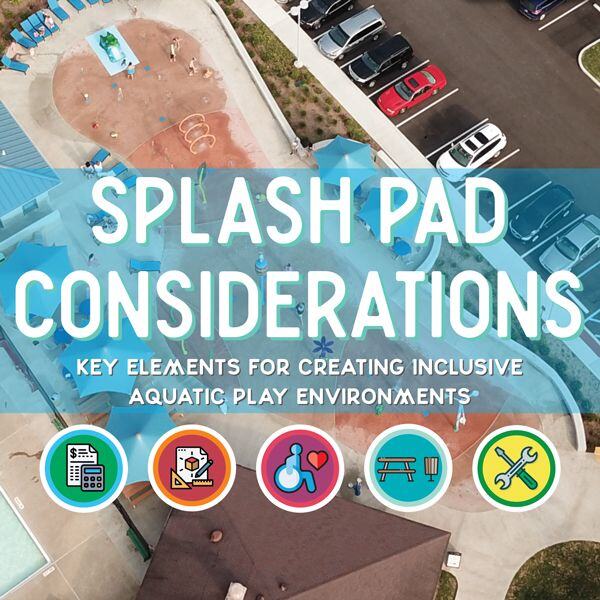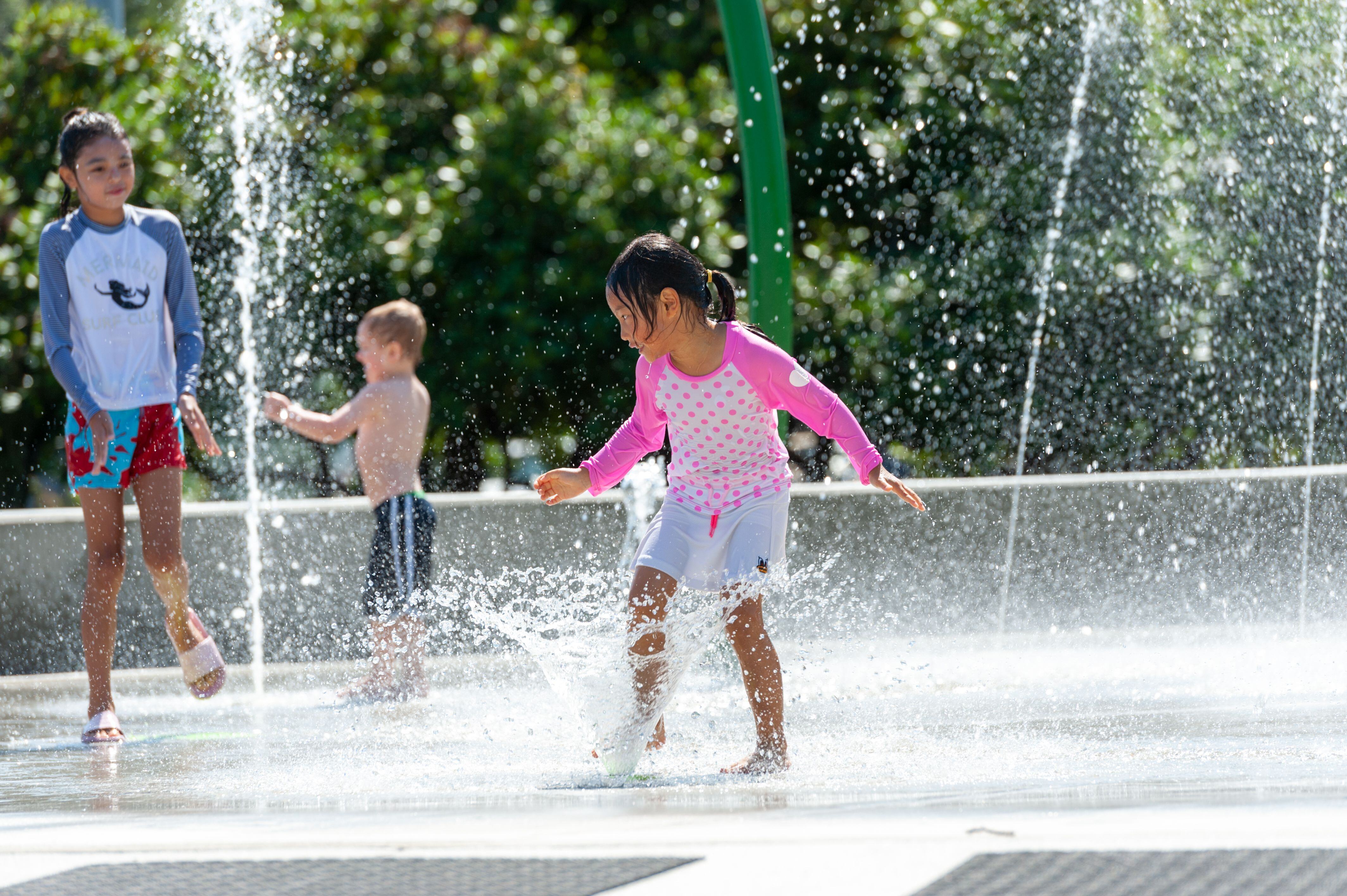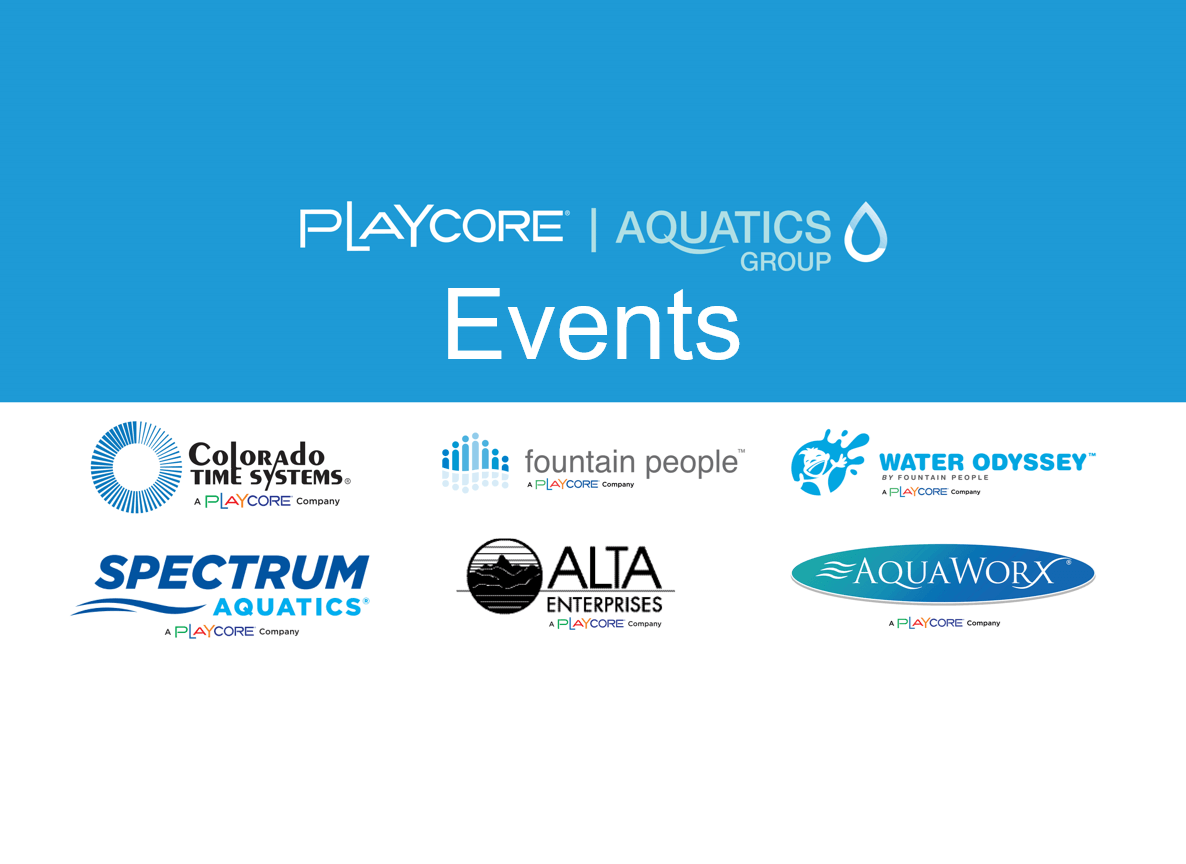Splash pads, also known as spray parks, spraygrounds or water playgrounds, are increasingly popular features in public spaces, providing a fun and refreshing way for people to cool off during hot summer days. However, as with any public amenity, it's important to ensure that splash pads are designed to be inclusive and accessible to people of all abilities. In this article, we'll explore some key considerations for designing splash pads for inclusion.
Budget
Let's just get this out of the way. How does that saying go? Failing to plan is planning to fail. Proper budget planning is critical to the success of any inclusive aquatic play space. Identifying critical must-haves, such as ADA accessible ramps, surfacing that meets local code requirements, restroom facilities, seating, trash receptacles, and shade structures are key ingredients to meet community needs. Before we jump into designing a spray park that maximizes play, let's make sure we don't drop the ball on safety and inclusion features so that people of all ages and abilities get to enjoy what will be one of the most popular attractions in their community.

Accessibility
Accessibility should be a top priority when designing a splash pad. The surface of the splash pad should be slip-resistant, and the depth of the water should be carefully considered to ensure that it is safe for people of all ages and abilities. Additionally, it's important to include wheelchair access to the splash pad and provide ramps or other means of entry and exit for people with mobility impairments.

Sensory
Sensory challenges relating to over-stimulation is also an important consideration when designing a splash pad. People with sensory processing disorders may find the noise and activity of a splash pad overwhelming, so it's important to include areas of the splash pad that are quieter and less stimulating. Additionally, incorporating features like water curtains, misters, and bubblers can provide a variety of tactile experiences that can be enjoyable for people with sensory processing disorders.

Multigenerational Appeal
Splash pads should be designed to appeal to people of all ages, from toddlers to seniors. This can be achieved by incorporating a variety of features that cater to different age groups, such as low-flow water play areas for toddlers, interactive water jets for older children, and shaded seating areas for parents and grandparents.

Diversity & Representation
Splash pads should also be designed with diversity and representation in mind. This can include incorporating water features that reflect the cultural backgrounds and interests of the surrounding community, as well as ensuring that signage and other information is available in multiple languages.

Maintenance and Sustainability
Finally, it's important to design splash pads that are easy to maintain and sustainable. This can include using materials that are durable and easy to clean, incorporating water conservation measures, and ensuring that the splash pad is designed to minimize water runoff and erosion. Download our Maintenance Guide for tips on cleaning and spray park maintenance.

In conclusion, designing splash pads for inclusion requires careful consideration of a variety of factors, from accessibility and sensory inclusivity to multigenerational appeal, diversity and representation, and maintenance and sustainability. By keeping these considerations in mind, designers can create splash pads that are safe, enjoyable, and welcoming for people of all abilities and backgrounds.



.jpg)

